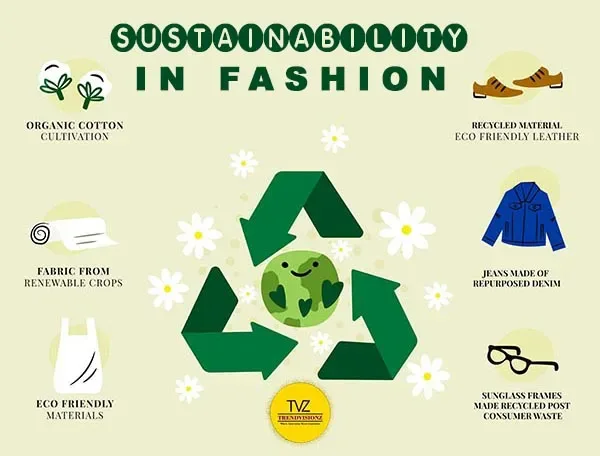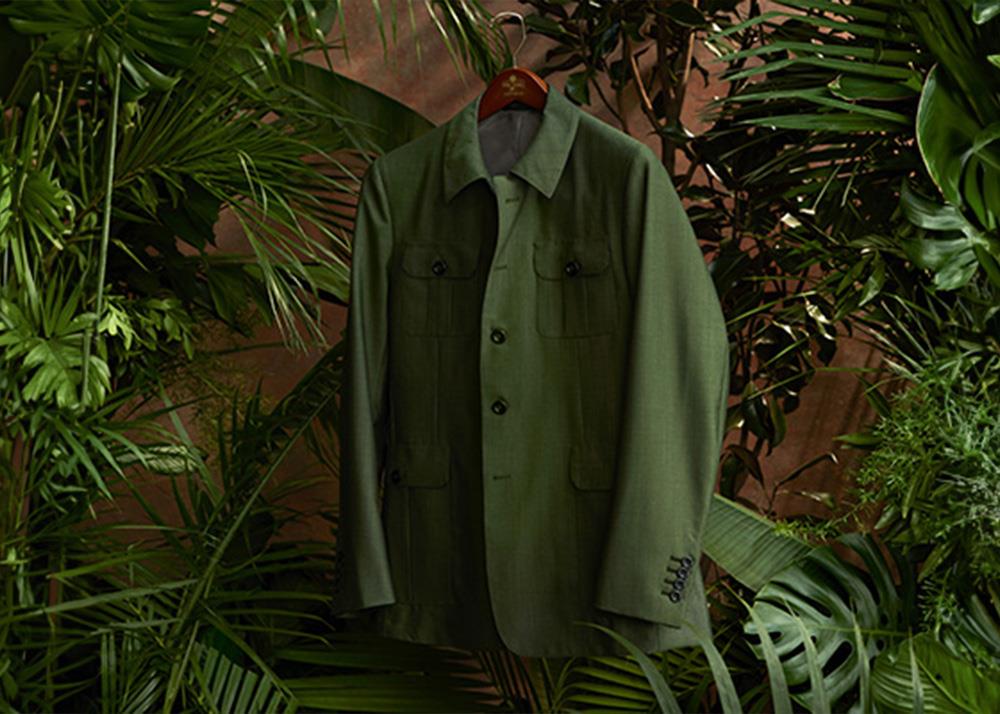Find Cape Town Sustainable Fashion Boutiques as well as Brands
Find Cape Town Sustainable Fashion Boutiques as well as Brands
Blog Article
Stay Ahead of the Curve by Exploring Ingenious Style Fads
In a sector as dynamic as fashion, remaining ahead includes more than just following existing trends-- it requires an exploration of advancement. The merging of modern technology and fashion advertises a brand-new period of customer interaction.

Embracing Smart Textiles
In recent years, the garment industry has experienced a transformative shift with the combination of clever textiles, an innovative innovation that mixes technology with material. This advancement stands for not only a fusion of visual appeals and functionality however likewise a significant leap towards sustainability and customization in fashion. Smart textiles, likewise called e-textiles, installed advanced electronics such as sensing units and conductive strings within the material, making it possible for garments to connect with the wearer or the atmosphere.
These textiles are designed to monitor physical specifications, such as heart rate or body temperature level, providing real-time health analytics. Past health and wellness applications, wise textiles are also being used for adaptive clothes, which can alter color or pattern in action to environmental stimulations, hence using a vibrant fashion experience.
Furthermore, the growth of energy-harvesting fabrics that produce power from motion or sunshine is leading the way for self-dependent wearable innovation. This development is appealing to ecologically aware consumers and designers aiming to lower the environmental footprint of style. As research and growth in this area advance, wise textiles are anticipated to come to be increasingly widespread, reshaping the landscape of contemporary style with their multifunctional capabilities.
The Surge of 3D Printing
Reinventing the production landscape, 3D printing has arised as a game-changer in the garment industry. This cutting-edge modern technology has allowed designers to push the limits of creativity, creating intricate and personalized garments that were formerly inconceivable. By leveraging electronic design and additive production, 3D printing helps with the production of complex geometries and patterns, allowing developers to experiment with new appearances and frameworks.
A noteworthy benefit of 3D printing in style is its capacity to produce on-demand, lessening waste and reducing supply needs. This effectiveness not just enhances manufacturing procedures but also enables rapid prototyping, making it possible for developers to bring their visions to life in a shorter duration. Additionally, 3D printing sustains personalization somewhat unparalleled by typical methods, offering personalized fits and special layouts customized to specific customer preferences.
The increase of 3D printing has actually likewise equalized style, making it accessible to emerging designers who can currently fabricate top notch pieces without significant economic investment in standard production framework. As technology remains to development, the apparel industry is poised to harness the full possibility of 3D printing, discovering new materials and methods that will most certainly redefine just how style is developed and created.
Lasting Fashion Developments
As the fashion industry faces the pushing requirement for environmental responsibility, lasting fashion developments have actually emerged at the center of transformative adjustment. The growing understanding of ecological impact has actually fueled a change in the direction of even more eco-conscious practices and materials. Brands and designers are currently prioritizing sustainability, including methods that lessen waste and decrease carbon footprints.
One considerable development is the increase of round style, which emphasizes recycling and upcycling to prolong the lifecycle of garments. This strategy not just decreases waste yet likewise motivates consumers to take on a more conscious technique to clothes intake. In addition, the usage of sustainable products, such as organic cotton, hemp, and recycled polyester, has gotten grip. These materials require less water and power throughout manufacturing, significantly minimizing environmental influence.
Another advancement depends on the adoption of cutting-edge dyeing techniques that use waterless processes or natural dyes, consequently minimizing the large amounts of water and chemicals commonly made use of in textile dyeing. Additionally, improvements in biotechnology have brought about the production of lab-grown natural leather and textiles, providing ecologically pleasant and cruelty-free options to traditional materials. Via these pioneering efforts, the garment industry is making purposeful strides in the direction of a much more sustainable future.

Tech-Integrated Apparel
Tech-integrated garments stands for a groundbreaking combination of style and technology, reshaping exactly how individuals interact with their clothing. This ingenious domain is like it marked by the addition of clever fabrics and ingrained electronic parts, enhancing both functionality and visual appeal. From physical fitness trackers installed in sports apparel to heated coats regulated via smart device apps, tech-integrated clothing supplies consumers unprecedented benefit and adaptability.
Introducing brands are driving this fad, concentrating on creating garments that reply to environmental stimulations or individual commands. As an example, some garments can transform shade or pattern in response to temperature level changes, while others incorporate biometric sensing units to keep an eye on wellness metrics like heart rate or stress and anxiety degrees. The smooth integration of innovation into fabrics also includes ecological sustainability, with efforts to create self-cleaning textiles or garments that get used to climate condition, thus lessening the demand for multiple layers.
Furthermore, the development of wearable modern technology is not simply limited to clothing however reaches accessories like watches and eyewear, additional expanding the range of tech-integrated fashion. As the sector proceeds to introduce, the possibility for modification and personalization in clothing grows, supplying consumers distinct, tech-enhanced fashion experiences that accommodate their private demands and choices.
Future of Virtual Style
In the last few years, the future of virtual fashion has become a transformative pressure within the industry, leveraging developments in digital technology to redefine exactly how fashion is developed, experienced, and eaten. By incorporating enhanced reality (AR), virtual fact (VIRTUAL REALITY), and 3D style tools, developers can currently craft immersive and interactive experiences that transcend traditional style borders. Virtual style enables for the development of garments that exist exclusively in electronic atmospheres, providing countless possibilities for innovation without the constraints of physical production.
This digital change not only offers chances for innovative expression however also addresses sustainability concerns intrinsic in typical style practices. Cape Town Sustainable Fashion. By removing the need for physical sources, virtual style minimizes waste and reduces carbon impacts. In addition, the rise of digital fashion lines up with the raising consumer need for individualized and one-of-a-kind experiences, as virtual garments can be tailored and customized to specific preferences effortlessly

Final Thought
The garment industry's future depend on the integration of lasting methods published here and cutting-edge technologies - Cape Town Sustainable Fashion. Smart textiles and tech-integrated garments are improving capability, while 3D printing provides chances for customization and waste reduction. Lasting fashion, through round approaches and green products, shows a commitment to ecological stewardship. Additionally, digital style is poised to redefine customer interactions. Adapting to these patterns is vital for brand names seeking to stay appropriate and affordable in this rapidly evolving landscape.
In current years, the style industry has actually experienced a transformative change with the integration of smart fabrics, a sophisticated innovation that blends technology with textile.As the style market grapples with the pushing demand for ecological obligation, sustainable fashion advancements have actually emerged at the center of transformative change.In current years, the future of online fashion has arised as a transformative pressure within the sector, leveraging improvements in digital technology to redefine how style is created, experienced, and eaten. The surge of online fashion straightens with the boosting consumer demand for unique and personalized experiences, as online garments can be customized and tailored to private preferences with convenience.
The style market's future lies in the assimilation of lasting methods and ingenious technologies.
Report this page